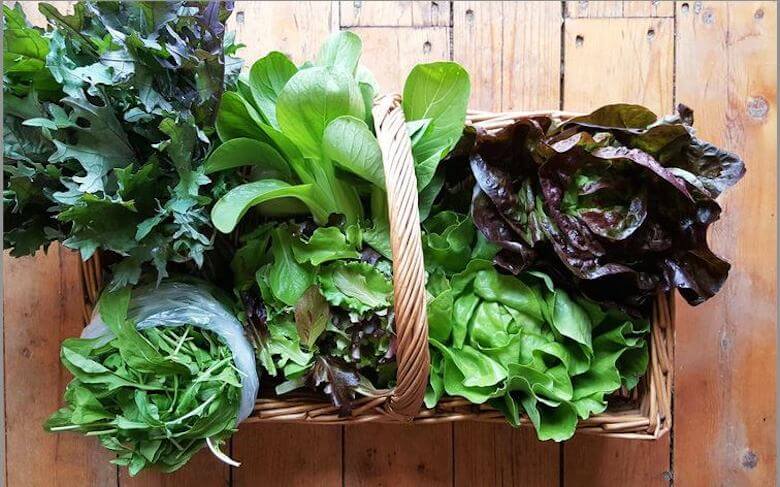
Editor’s note: We kicked off our first annual Food Loves Tech event last summer in Chelsea—here’s a recap. We’re bringing a taste of the food and farming future back this year, but just across the East River at Industry City. This story is part of an ongoing series about technology’s effects on our food supply.
The landscape of today’s food market is littered with food boxes, meal kits and grocery delivery services, many using language like “farm fresh,” “locally-sourced” and “regenerative agriculture.” While these models make shopping and cooking convenient for some consumers, the food is often of ambiguous origin. “They aren’t really using 100% locally grown food,” says Emilie Miyauchi, CSA and Farm Network Manager at local food justice nonprofit Just Food, “so you aren’t really sure of where it is coming from.”
Unlike these middle-man services, community-supported agriculture (CSA) operations create a direct relationship between farmers and their communities, whereby CSA members share in the risk and rewards of farming by paying up front to regularly receive food directly from the farm. Faced with increased competition from these other services, membership in CSAs has seen a decline. “NYC in particular is struck with the amount of competition,” says Miyauchi. “It’s hard for these community-driven models to retain membership from year-to-year when people are forced out through pricing.”
The first step, she says, is to create some parameters around the CSA model. Earlier this year, long-time CSA farmer and author of Sharing the Harvest: A Citizen’s Guide to Community Supported Agriculture, Elizabeth Henderson, invited CSA farmers and organizations, including Just Food, to collectively develop a CSA Charter for the US and Canada. Beyond clearly defining the direct farm-to-consumer approach, the charter describes the CSA model as one that has economic and environmental equity at its heart, and is founded on actual relationships.
For Just Food, an organization focused on access to locally-grown food in underserved NYC neighborhoods, the language around equity and social inclusiveness is fundamental to the charter. Miyauchi was heartened to see the consensus around these core principles within the diverse and independent CSA community. “It was really good to be hearing nationwide that people really thought of the model as concerned with the rights of the environment, of food security for future generations,” she says, “There is concern for farm workers, for farmers and for people from all racial and economic backgrounds to have access to high quality food.”
The charter aims to help CSAs better articulate these core principles that differentiate the model. In October (date TBA), Just Food will host a CSA Community Chat to discuss community outreach and engagement strategies that use the shared language of the CSA charter to help strengthen the network. “As we hear so much co-option of the model and of the language of eat locally,” says Miyauchi, “this is where the narrative starts to shift around CSA being a nice way to get food from a farm to one that is really about divestment from a dominant food system that has roots in equity, and where people are invested in a community-owned food system.”



